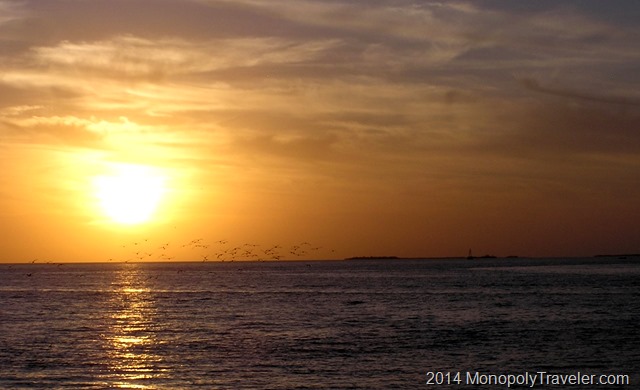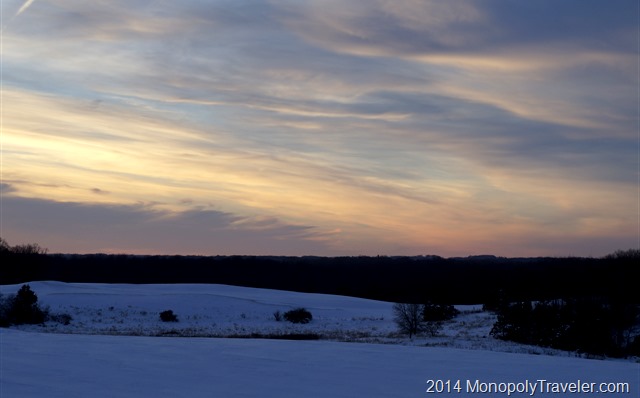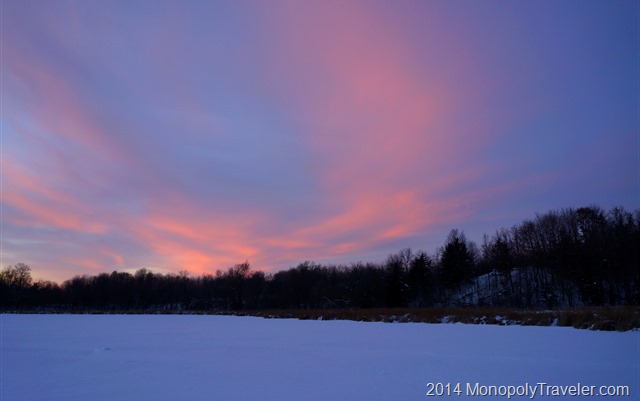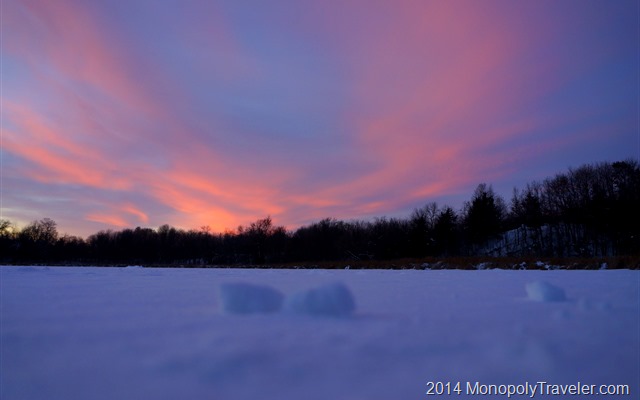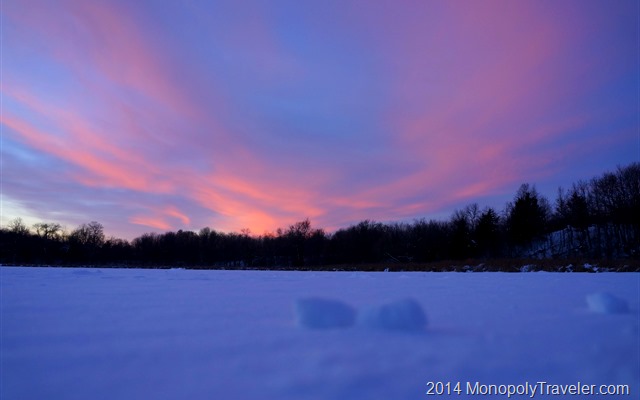Ahh, sunsets. Like so many people, this is one of my favorite subjects to photograph. Looking through any number of posts on this website you will no doubt come across some of my pictures. In Peter’s photography experiment post on sunsets (located here…. he focuses on tropical sunsets. More specifically, sunsets over the ocean. Who doesn’t like a good tropical ocean sunset photo. There are photos of this subject all over the place. I have taken many of these myself and will likely take several hundred or even several thousand more myself in the future. However, most of my sunset opportunities are far away from any ocean so I have to practice in different situations.
Peter writes about the importance of composition in taking a good sunset photo and that applies to any sunset photo. Just a photo of the setting sun in the center of the picture is certainly not as interesting as capturing some of the surrounding landscape and inviting the viewer into the setting. Fortunately Lake Superior is much closer to me and can photograph similar to the ocean providing a place to practice. One of the differences is the lack of nice sandy beaches but many of the rock formations can more than make up for this in creating interesting sun sets. Another opportunity for practice comes with the sea of snow often available. Sun sets are different with a snow covered landscape for a couple of reasons. First, sun sets occur earlier in the day and happen substantially faster. Second, the reflection off of the snow provides a different lighting, and thirdly, there are no leaves on many of the trees allowing different silhouettes to outline a landscape.
During this past winter, when the polar vortex affected so many, there were a number of great opportunities to practice sunset photography. The above picture was taken one evening on a last minute decision to go out and watch the sun set because the clouds were creating a beautiful canvas while the sun traveled through them. Unfortunately those clouds also covered the sun right at sun set. Still, the way the light bounced off of the clouds provided for an amazing opportunity to practice my photography. This was at a local park and as I traveled around the park the sky kept begging for more pictures as the clouds and colors changed and intensified so naturally I obliged.
Stopping at a frozen over lake, I watched the final moments of daylight vanish as the light continued to change the look of the landscape all the while. My camera kept snapping photos, changing the composition of each shot in an attempt to learn attributes of a great composition. During the winter in the Midwest, the sunset colors are different than the summer or in the tropics. Whether it is do to lack of the growing plants, the snow covered landscape, or the angle of the sun, I don’t know. But I do know it is just different, the reds are more pronounced in the clouds creating a striking contrast to the blue sky.
After the sun had set there were still amazing colors floating around in the sky. Taking a few pictures over this lake I was just moving around in the snow and wanted to try a low angle shot. Using my boot I started kicking away the snow to make a place for the camera to capture this low angle. By accident the snow was firm enough to create these snow balls so I decided to try and add these into the photograph. Setting up the first shot, the snow balls definitely added to the overall composition by providing interest in the foreground. Maybe centered is not the best placement though. Let’s try moving them to one side. That helps! Instead of focusing on the snowballs by putting them in the center of the picture, moving them to the side allows the viewer to look past them and returns the focus onto the colorful clouds. Composition definitely plays a part in the quality of a photograph in the winter as well.

